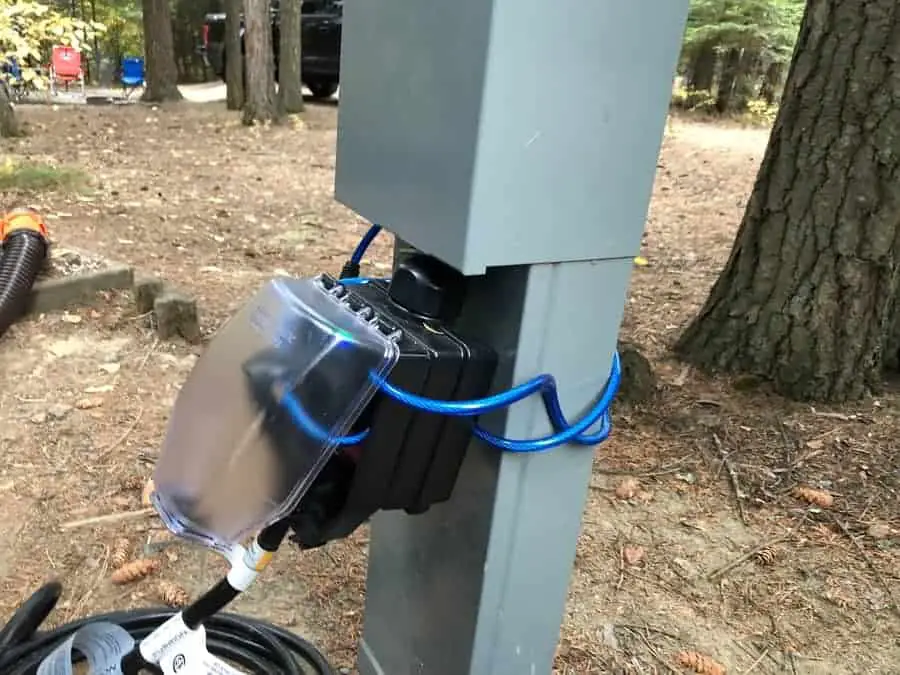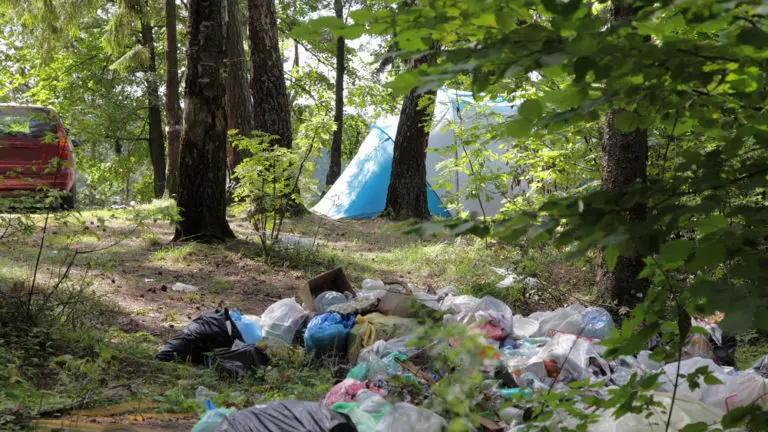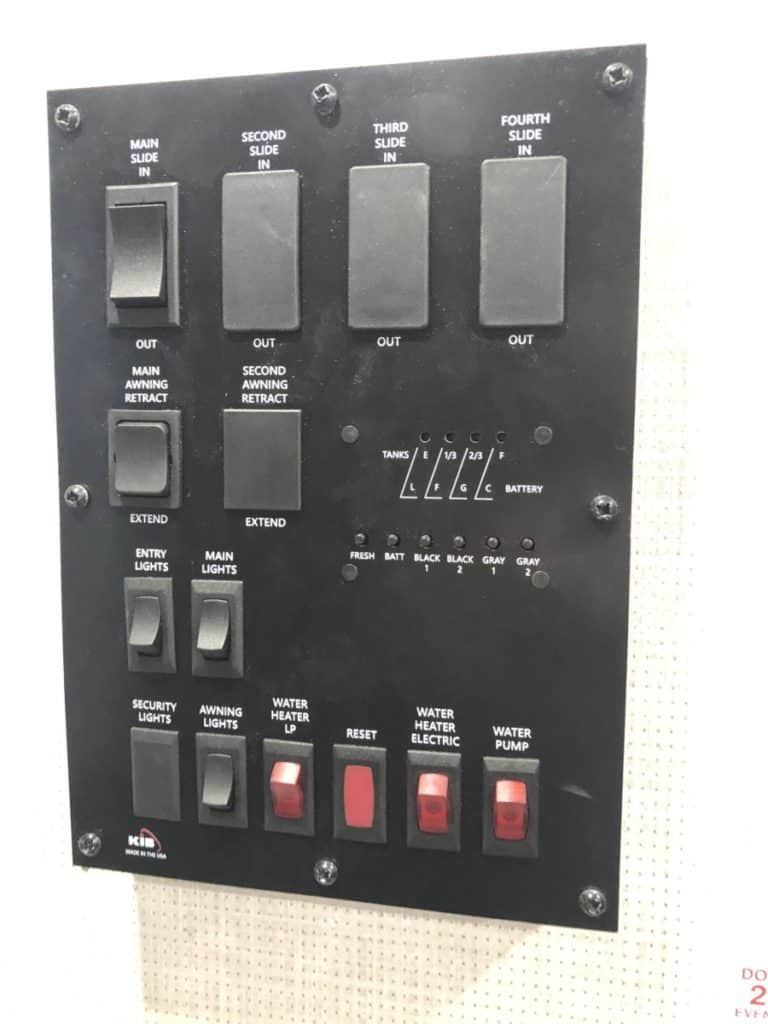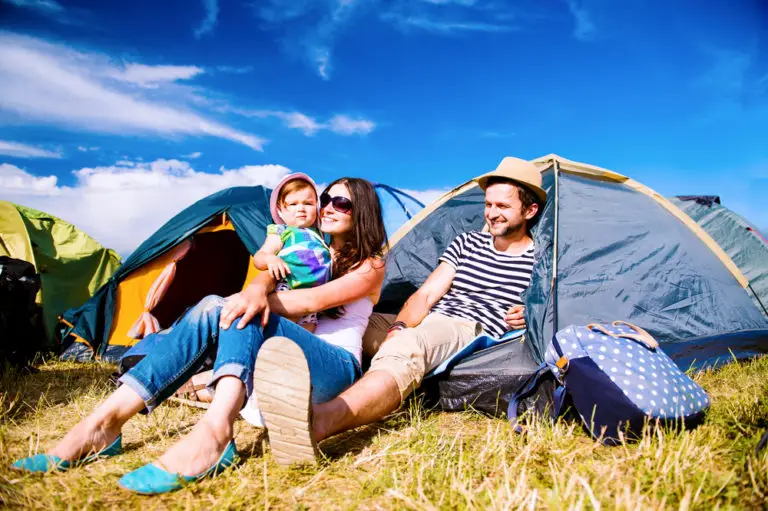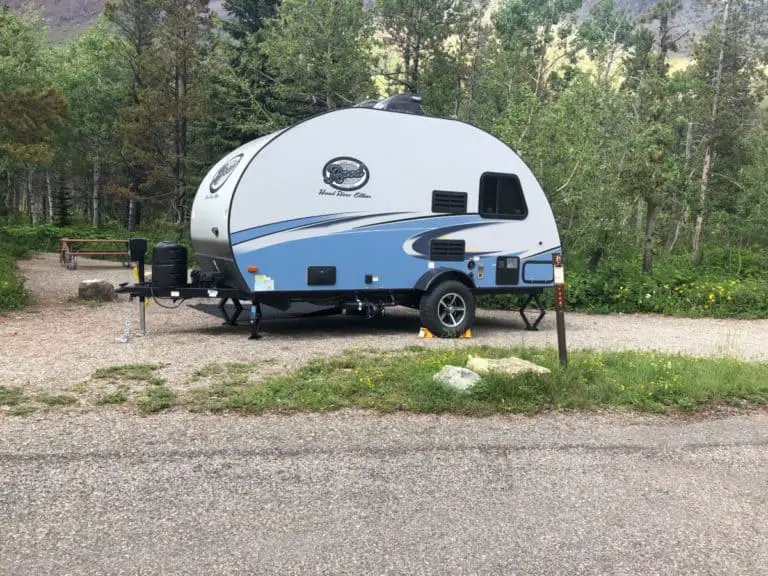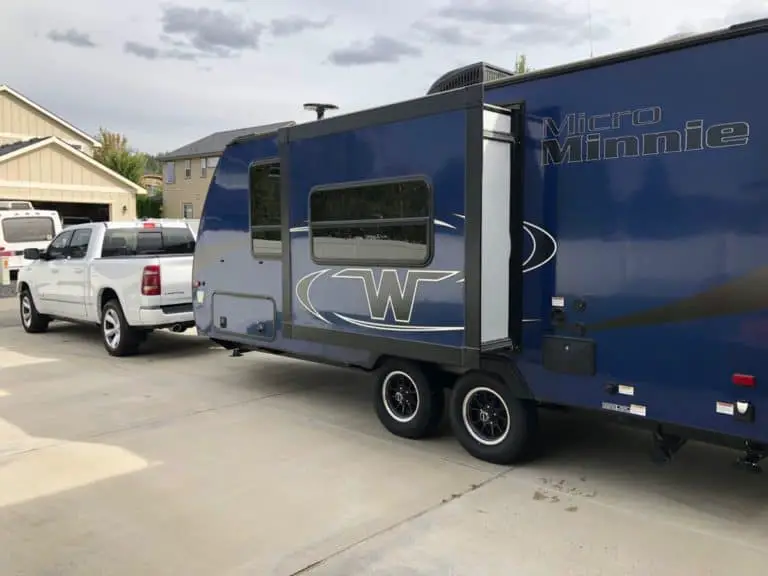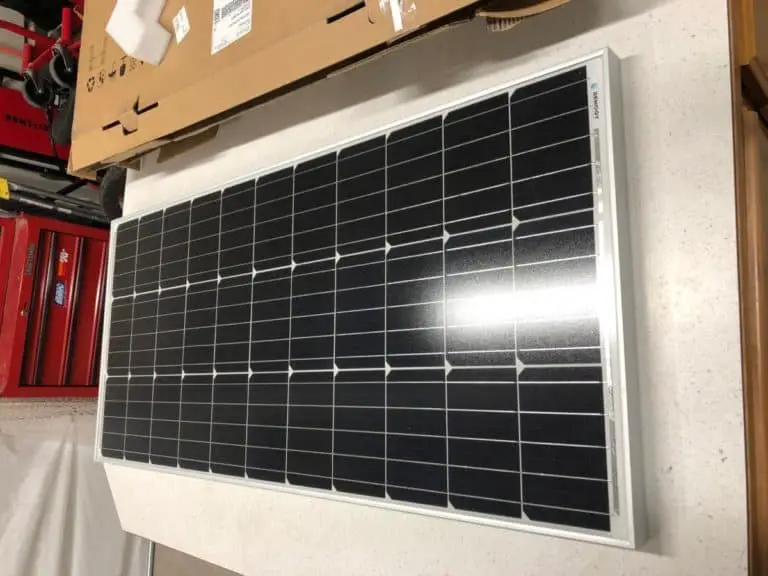How to Book a Campsite (secrets to getting into a popular site)
Through camping, people are able to explore their adventurous side, make meaningful memories with loved ones, and detach from everyday stresses. It can be a wholesome family road trip or a fun friends getaway.
Planning an outdoors trip can be overwhelming, especially for beginners, which is why booking the right campsite is key. Different campsites offer different services and resources (showers, wifi, meals, tents, firepits, activities, discounted excursions, activities for children, etc). You want to make sure the campsite you reserve matches all your needs and your travelling partners’.
It can be tiresome locating a campsite in your desired location and that’s where online booking services come in handy. Online booking service sites such as Recreation.gov or ReserveAmerica.com are extremely helpful because it provides easy access to compiled campsite information such as photos of sites, dimensions of sites, availability, amenities, and etc. Camp and other relevant information are organized in a way consumers can sort through to determine which can meet their expectations.
Finding the Perfect Campground
When booking a campground, you may find some in remote locations with no amenities, and you may find some in the heart of a city with cable TV, WIFI, and pools. Location may be an important fact to consider as well to determine why you are camping in a certain area, and what your purpose is. For example, you may be going to the Oregon Coast, and would prefer to stay oceanside. This will narrow your campgrounds significantly.
The first aspect to consider when searching for a campsite is its requirements. If a campsite has certain requirements, it is usually quite straight-forward and included in the camping information on the particular booking website. This can include pets, age restrictions, rules, and vehicle sizes allowed among others. Campsites have the right to turn away parties that do not follow their guidelines so being unaware is not a valid excuse. Checking this first makes sure you won’t face being turned away upon arrival. If for any reason your party has changed since you booked your reservation, there is a chance some campsites will work with you depending on the circumstances. You should contact the campsite immediately and inform them of the changes to see if this is acceptable.
The second is to consider the type of experience you are wanting. For some, the campsite is the final destination. They plan to camp, explore, and spend the entirety of the trip on the campsite itself. A KOA type campground with many amenities such as pools, restaurants, and petting zoos may be an ideal campground to look for.
For many others, the campsite is a place of rest that is close to their ultimate destination (national park, forest, trails, lake, etc). People searching for a deep connection to nature may feel campsites close to their ultimate destination can be more commercialized, noisy, have higher traffic, more confined spaces, and have much less privacy, making a quiet getaway difficult. They will be more inclined to find a State or National Park campground to enjoy the quiet serenity of nature.
Those wanting to be close might be more concerned with being near enough in proximity to reach their ultimate destination in time for their planned activities and have basic resources (like electricity and clean water). Everyone has different reasoning, but it comes down to what you are wanting to gain from your trip. Reviews can be insightful for this part because people honestly articulate their personal experiences; you get a look into the good, the bad, and the ugly.
Lastly, if you are wanting to book a campsite during peak season, make sure to give yourself ample time to research and book the campsite as many fill up fast. Some campgrounds and parks require permits such as a backcountry permit, but will still let you reserve a spot even without one. Without a permit, you will not be allowed on the campground even though you may have reserved a spot. This is a critical step many people overlook.
Permits are usually granted after an application has been processed. Some permits may have their own fees and vary in acceptance time, depending on season and availability. Peak seasons will have more applications to process so it might take longer to hear back. Additionally, be aware of how long the permit covers. Some may last a few days while others can last weeks. If you want to stay on a campsite longer than your permit permits, you will need to book for multiple permits. Applying for multiple permits does not necessarily increase the processing time. If you are booking a campsite relatively close to your travel dates, it is recommended to apply for a permit first to ensure you will be able to stay somewhere; some campsites do not refund cancellations and it is easier to find a campsite last minute although it might not be your first-choice. If you are booking somewhat far away from travel dates, reserving a campsite might be better so that you can get the exact campsite you want. The campsite information will state whether a campsite requires a permit or not, where and how to obtain them, and average wait times.
In addition to the above, when choosing a campground, typically you can filter your search to what amenities you would like as well as look at a map view to find the campground in the perfect location for your additional planned activities outside of camp.
Finding the Perfect Campsite
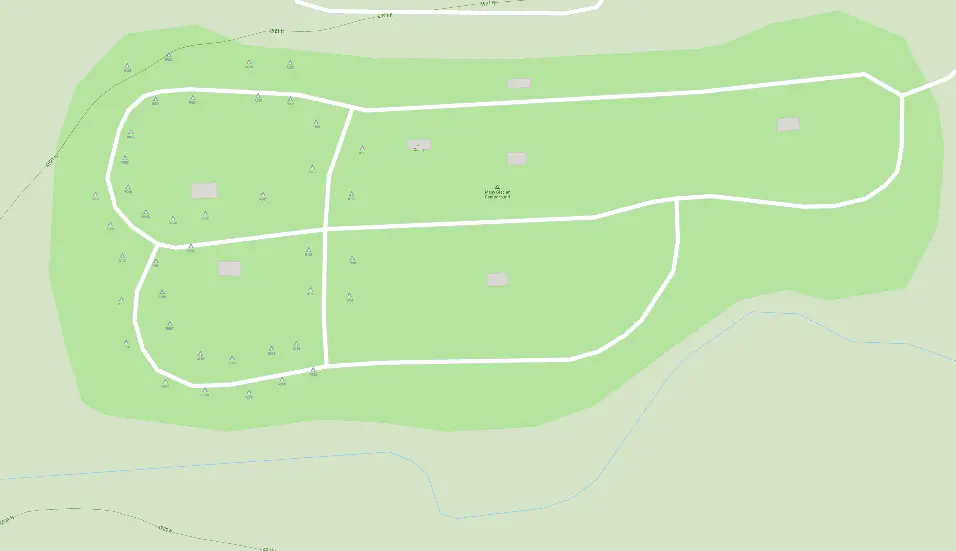
Each campground will have different types of sites, some may have a tent only section, then a section for RV’s or travel trailers. Some may allow them to be intermixed.
When choosing your campsite whether booking online, or if multiple are available walking up, there are several factors to consider.
First go to the campground website and find the map of sites to be your guide. Typically, the most important factor is the scenery, if there is a river by the campsite, you may want to make sure you get a river front site.
Some important factors may be if the campsite is located near a bathroom. This may be a plus or minus depending how you view it or need it. If you are tenting it, you may want to be closer to the bathroom. If you are in a trailer with a new born baby, you may not want to hear the bathroom door slam 50 times a night when trying to put your baby down. (don’t ask me how we discovered this.)
Another factor is heat gain, if it is summer you may want to position your RV so your awning is towards the sun to keep the heat off of your RV as much as you can. If it is winter, you may want all the heat you can get.
These considerations go on and on, or maybe you don’t care and just want to be close to the pool if available. Here is a quick list of items to take into account:
- Size of campsite (will my RV fit)
- Layout
- Back in or pull through
- Proximity to amenities
- Privacy
Below you will find the standard site details of a typical campsite.
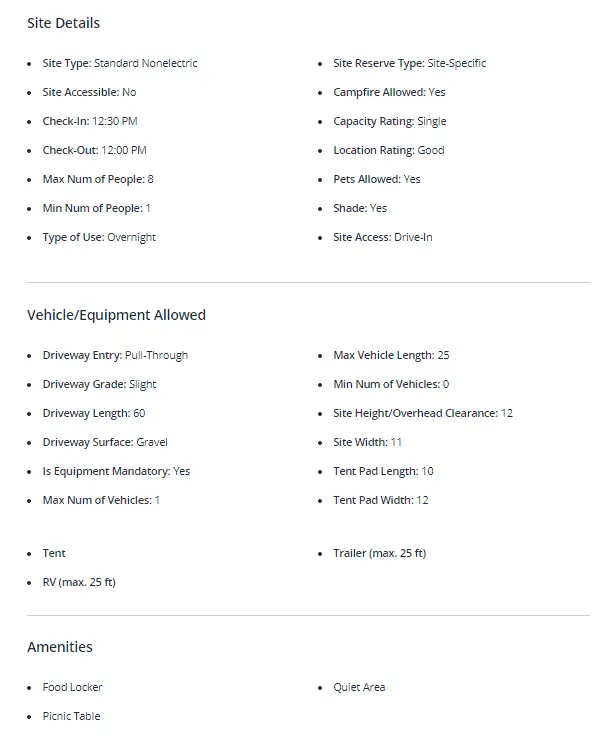
Now that you know some important factors to look for, let’s dig into how to actually book your site.
How to Book a Campsite Online
If you are wondering how to book a campsite on Recreation.gov or Reserveamerica.com, it is quite simple. The site itself offers availability of campsites, prices, reviews, and amenities included. The layout has been created to be user-friendly; all you have to do is type-in the potential destination, dates, and check which resources you are wanting. The most available sites will pop-up and you can sort out the campsites based on price or distance. Not only are you able to see which campsites have availability, but permits, tours, other points of interests, and other packages involved. The Rec.gov campsite booking information can even help you book other activities such as non-campsite lodging, RV parking, boating, and other outdoor interests. The aim is to help personalize the experience for potential campers and notify about activities they may not be familiar with.
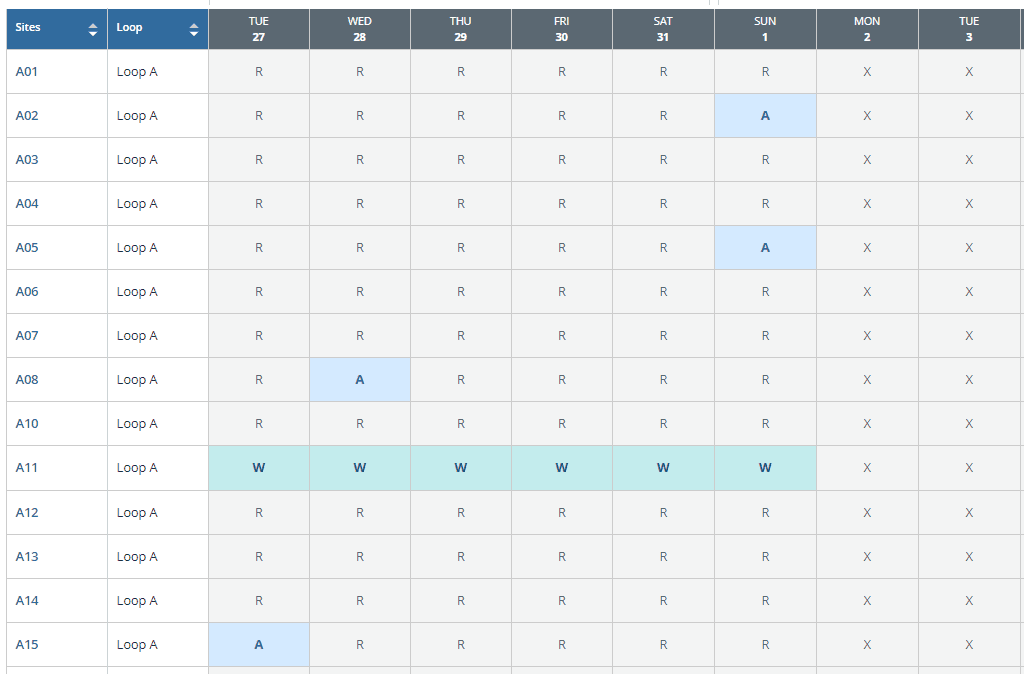
The above photo gives you a detail of what campsites are available at certain dates. This will make it easy locating a space and dates available. Booking online helps people delve through the hordes of information but it can still be frustrating. After research you will find there are probably ideal times to visit a certain destination i.e. weather, water levels, etc. You are more than likely not the only person to want to travel during this time. This is why it is important to be flexible with campsite locations and dates. The further in advance you plan your trip, the more likely you can reserve your top picks and have time to apply for permits.
As an example at a popular campground we like to go to, you have to start booking 6 months in advance, the campground opens June 15th, therefore, on January 15th you have to log into your computer, typically this also includes our mobile devices and multiple browser tabs at 7:00 AM when sites open, and keep trying to book. Usually if we clicked too early or a hair too late, all the sites are booked and you have to try again the next day.
The good news is that you get new sites that open up every day, but the bad news is that someone can typically book for 14 days meaning the site is out of the running for that duration and there may not be a lot of chances depending on how long people book. A campground we stay at is only open for 2.5 months, therefore if people booked the maximum 14 days, theoretically, there could only be 5 different campers per season in that site.
One way we can secure additional spots is by checking Recreation.gov from time to time for cancellation updates. Inversely, you will want to check up on your reservation before your trip to ensure it has not been cancelled.
Securing a Walk-Up Campsite
Recreation.gov or other camping sites may be listed as “walk-up”. Walk-up campsites, also sometimes known as walk-ins, are sometimes utilized by campsites on a first-come, first serve basis. Campers can not reserve a spot until they have physically arrived at the destination or if they have a friend already at the campground who is available to fill out the paperwork and submit payment on their behalf.
Obtaining a spot is contingent that there is still availability at the time of campsite arrival and may still require certain permits. For this reason, this method is not ideal especially during peak parts of the season. Depending on this type of campsite always proposes the possibility of having no spot to stay. Imagine travelling thousands of miles only to find the only place you can sleep is a dingy motel an hour away!
However, there are campsites that are walk-up only. Rec.gov informs users when a campsite falls within this category and help customers pre-reserve if this is a viable option. Or, if you were planning a trip with a friend but wanted to take two vehicles, having them inform the park coordinators you are joining them might help pre-reserve a walk up site.
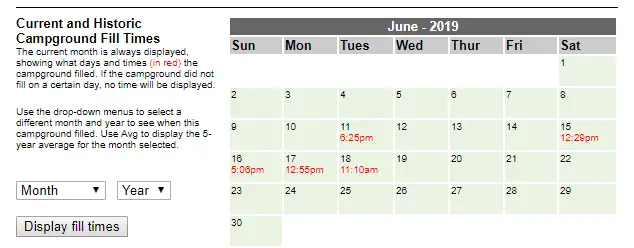
Tip: Many campground websites publish the time and date history of when they have filled up in the past. Try and get there a few hours before they have historically filled up.
To actually reserve a walk up spot, when you enter the campground you need to get the booking paperwork, typically an envelope. Drive around and find an available spot you like. Park in the spot, fill out the paperwork, leave your vehicle and items in the campsite, and walk and submit payment in the payment box.
Now hang your tag on your post showing you paid and have secured the space.
We have seen many people lose out on a spot because they had to leave and go find the paperwork as well as arguments that surfaced from this. If you have to do this, always leave someone at the site, to mention to people you are in the process of paying or just get the paperwork upon arrival so you don’t lose a spot in the process.
Some campsites will allow customers to reserve parking spots (essentially sleep in their cars overnight), but will only offer walk-up access to campsites. This would mean a camper would need to be prepared to sleep in their car (and bring appropriate materials) but are unable to utilize main campsite facilities. This option can work for many but it is being aware. Some materials to keep in mind are blankets (even if it is summer, many desert terrains get very chilly at night), sleeping bags, layered clothing, water, lotion, and pillows.
Another tip is that some campgrounds have “hike in” campsites only, therefore if you arrive by car, you are out of luck. Sometimes these require a back country permit, but we have seen many that don’t. If you really needed a spot, you could park your car else ware, and walk into the site and stay the night. It may be a pain in the butt to load all of your gear for the distance, but you may not have a choice.
How to book a campsite in a popular destination such as Yosemite, Yellowstone, or Glacier National Park?
At a popular destination, it typically will require you to follow the directions of booking as it is a popular space. On Recreation.gov, Glacier National Park camping spots open up 6 months in advance. Just like mentioned above you need to log in every day when they open up at 7AM PST and try your luck.
Our secret trick to find and secure a spot in a fully booked campsite is to be flexible with your dates, and check multiple times per day prior to find cancellations, but the only downside is you may not get the site nor the dates you were hoping for.
Conclusion
People like to camp for all sorts of reasons. You do not have to be a seasoned explorer to camp, as the plethora of campsites and online booking websites’ camping information are sound advice and knowledge for any novice camper wanting to organize and enjoy a trip.
Planning a successful camping trip can be daunting but it is possible with time. Time to perform research, book permits, plan activities, and finally booking a place to meet your needs. The biggest difference between camping and most trips are obtaining a permit. Knowing which spots require permits and making sure you book them beforehand is all that is needed. Most permit instruction processes are quite simple.
Furthermore, finding a suitable campsite that will fit your family as well as the length of your vehicle or amount of tents is one of the most important steps. Some people simply need a spot to crash even if it is in their car while others may be craving more space, there is no shame in either! Referring to camping sites such as Recreation.gov and reserveamerica.com can largely facilitate the research process.
Be the first to be notified about FREE tips, hints, coupon codes, and email-exclusive information. All for FREE!


